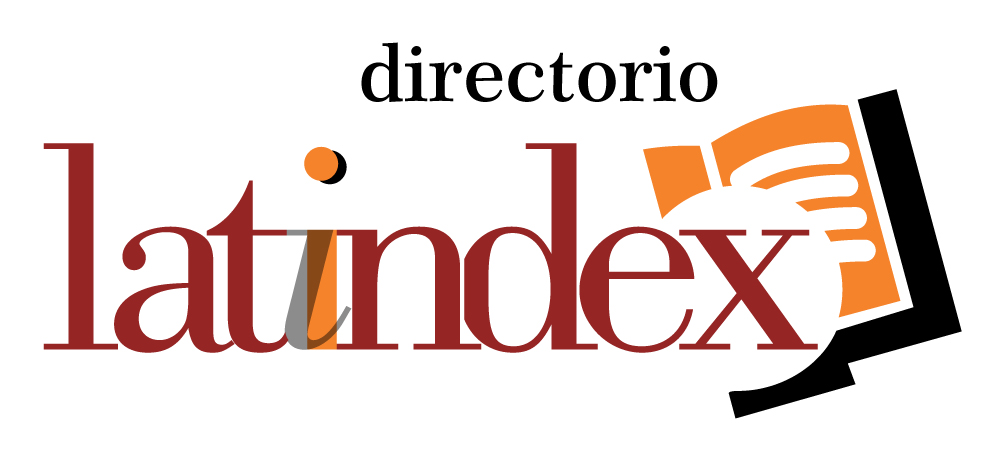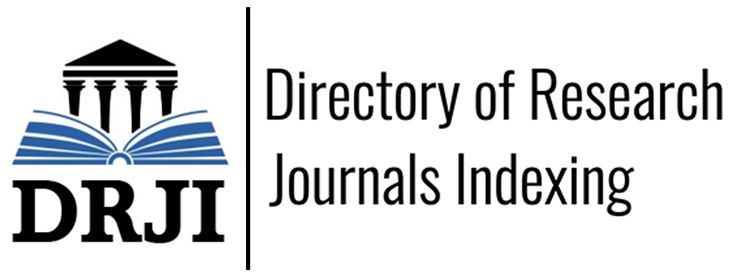Innovación Tecnológica Ecosostenible en Curtidurías: Cuero Vegano y Natural
Eco-Sustainable Technological Innovation in Tanneries: Vegan and Natural Leather
DOI:
https://doi.org/10.61210/kany.v2iI.73Palabras clave:
Cuero, Vegano, Curtiduría, Ambientalista, ModaResumen
El presente es una revisión sistemática de la innovación tecnológica eco sostenible en curtidurías y específicamente del cuero vegano y natural, recoge la información de la base de datos Scopus en su plataforma Elsevier mediante ficha bibliográfica con la técnica de la observación e investigación de gabinete con opciones de búsqueda booleano and y or de las palabras cuero y vegano. Concluye que la industria del cuero sintético está evolucionando en el uso de materia prima de origen biológico produciendo así biomateriales de características físico químicas de estabilidad mecánica, sostenibles y de funcionalidad comercial; de ellos la producción vegana no utiliza insumos animales sino recursos del suelo que, a diferencia de la producción de cuero tradicional, todavía existe por su belleza y características de las pieles todavía existe. El mercado internacional para el cuero vegano tiene rápido crecimiento y la ONU la respalda por el bienestar del animal y la fabricación de biomateriales libres de crueldad, dado que su producción significa dolor y muerte animal y sinónimo de riesgo laboral y ambiental en materia de salud.
Citas
Agencia Bloomberg. (2019). ¿Zapatos, billeteras e incluso autos veganos? ¿En serio? Diario Gestión. https://gestion.pe/mundo/zapatos-billeteras-e-incluso-autos-veganos-en-serio-noticia/
Ashley, V. (2021). Knowledge of Leather Alternatives: An Exploratory Study: Implications for Education. Journal of Textile Science & Fashion Technology, 7(4), 6–11. https://doi.org/10.33552/jtsft.2021.07.000668
Balieva, G. N. (2021). Veterinary students’ perceptions on animal welfare animal rights and veganism influence their consumer preferences for purchasing animal products. Journal of Hygienic Engineering and Design, 34(April), 132–137.
Blasco, M. P. C., Limiñana, M. Á. P., Silvestre, C. R., Calpena, E. O., & Aís, F. A. (2022). Sustainable Reactive Polyurethane Hot Melt Adhesives Based on Vegetable Polyols for Footwear Industry. Polymers, 14(2). https://doi.org/10.3390/polym14020284
Cavali, J., de Souza, M. L. R., Silva de Oliveira Kanarski, P., Coradini, M. F., & Vieira Dantas Filho, J. (2022). Tanned leather of the paiche Arapaima gigas Schinz, 1822 (Arapaimidae) with extracts of vegetable origin to replace chromium salts. PLOS ONE, 17(1), e0261781. https://doi.org/10.1371/journal.pone.0261781
Choi, Y. H., Kim, S. E., & Lee, K. H. (2021). Faux fur trade networks using macroscopic data: A social network approach. Sustainability (Switzerland), 13(3). https://doi.org/10.3390/su13031427
Choi, Y. H., & Lee, K. H. (2021). Ethical consumers’ awareness of vegan materials: Focused on fake fur and fake leather. Sustainability (Switzerland), 13(1). https://doi.org/10.3390/su13010436
D’Souza, C., Brouwer, A. R., & Singaraju, S. (2022). Veganism: Theory of planned behaviour, ethical concerns and the moderating role of catalytic experiences. Journal of Retailing and Consumer Services, 66, 102952. https://doi.org/https://doi.org/10.1016/j.jretconser.2022.102952
El Moujahed, S., Errachidi, F., Abou Oualid, H., Botezatu-Dediu, A.-V., Ouazzani Chahdi, F., Kandri Rodi, Y., & Dinica, R. M. (2022). Extraction of insoluble fibrous collagen for characterization and crosslinking with phenolic compounds from pomegranate byproducts for leather tanning applications. RSC Adv., 12(7), 4175–4186. https://doi.org/10.1039/D1RA08059H
Grand view research. (2021). Synthetic Leather Market Worth $57.0 Billion By 2028 | CAGR: 7.8%. Grand View Research. https://www.grandviewresearch.com/press-release/global-synthetic-leather-market
Grand View Research. (2021). Synthetic Leather Market Size, Share & Trends Analysis Report By Product (Bio-based, PVC, PU), By Application (Automotive, Footwear), By Region (APAC, Central & South America), And Segment Forecasts, 2021 - 2028. https://www.grandviewresearch.com/industry-analysis/synthetic-leather-market/methodology
Greenpeace. (2012). Cueros tóxicos:Nuevas evidencias de con_taminación de curtiembres en la Cuenca Matanza-Riachuelo. Greenpeace, 1–27. https://www.greenpeace.org/archive-argentina/es/informes/Cueros-toxicos/
Gupta, R., & Dave, D. (2021). Biomaterial: A Sustainable Alternative to Animal Leather and Synthetic Material. Annals of the Romanian Society for Cell Biology, 25(6), 7317–7331. https://ourworldindata.org/grapher/animals-slaughtered-for-meat
Hamilton, C. (2019). Mourning leather: Queer histories, vegan futures. Memory Studies. https://doi.org/10.1177/1750698019876001
Hildebrandt, J., Thrän, D., & Bezama, A. (2021). The circularity of potential bio-textile production routes: Comparing life cycle impacts of bio-based materials used within the manufacturing of selected leather substitutes. Journal of Cleaner Production, 287. https://doi.org/10.1016/j.jclepro.2020.125470
Infinium. (2021). Mercado de cuero vegano (producto: poliuretano, poliéster reciclado y base biológica; aplicación: muebles, automóviles, calzado, bolsos y carteras, ropa y otras aplicaciones): análisis de la industria global, tendencias, tamaño, participación y pronóstico. Infinium Global Research. https://www.infiniumglobalresearch.com/consumer-goods-packaging/global-vegan-leather-market
Jourgeaud, B. (2018). Le vegan veut supplanter le cuir. Journal Du Textile, 55(2403), 25–27.
Martinez Buitrago, S. Y., & Romero Coca, J. A. (2017). Revisión del estado actual de la industria de las curtiembres en sus procesos y productos: un análisis de su competitividad. Revista Facultad de Ciencias Económicas, 26(1), 113–124. https://doi.org/10.18359/rfce.2357
Meyer, M., Dietrich, S., Schulz, H., & Mondschein, A. (2021). Comparison of the technical performance of leather, artificial leather, and trendy alternatives. Coatings, 11(2). https://doi.org/10.3390/coatings11020226
Minh, N. T., & Ngan, H. N. (2021). Vegan leather: An eco-friendly material for sustainable fashion towards environmental awareness. AIP Conference Proceedings, 2406. https://doi.org/10.1063/5.0066483
Narayanan, P., & Sreeram, K. J. (2019). Is screening of genuine leather possible? 35th IULTCS Congress 2019: “Benign by Design” Leather - The Future Through Science and Technology.
Saha, N., Ngwabebhoh, F. A., Nguyen, H. T., & Saha, P. (2020). Environmentally friendly and animal free leather: Fabrication and characterization. AIP Conference Proceedings, 2289. https://doi.org/10.1063/5.0028467
Schmutz, U., & Foresi, L. (2017). Vegan organic horticulture - standards, challenges, socio-economics and impact on global food security. Acta Horticulturae, 1164. https://doi.org/10.17660/ActaHortic.2017.1164.62
Stefan, D. S., Bosomoiu, M., Constantinescu, R. R., & Ignat, M. (2021). Composite Polymers from Leather Waste to Produce Smart Fertilizers. Polymers, 13(24). https://doi.org/10.3390/polym13244351
Vijeandran, K., & Anh, V. T. T. (2021). Synthesis of vegan leather using plant-based substrates: A preliminary study. Defect and Diffusion Forum, 411 DDF. https://doi.org/10.4028/www.scientific.net/DDF.411.57
Vita, G., Lundström, J. R., Hertwich, E. G., Quist, J., Ivanova, D., Stadler, K., & Wood, R. (2019). The Environmental Impact of Green Consumption and Sufficiency Lifestyles Scenarios in Europe: Connecting Local Sustainability Visions to Global Consequences. Ecological Economics, 164, 106322. https://doi.org/https://doi.org/10.1016/j.ecolecon.2019.05.002
Wijayarathna, E. R. K. B., Mohammadkhani, G., Soufiani, A. M., Adolfsson, K. H., Ferreira, J. A., Hakkarainen, M., Berglund, L., Heinmaa, I., Root, A., & Zamani, A. (2022). Fungal textile alternatives from bread waste with leather-like properties. Resources, Conservation and Recycling, 179, 106041. https://doi.org/https://doi.org/10.1016/j.resconrec.2021.106041
Archivos adicionales
Publicado
Cómo citar
Licencia
Derechos de autor 2024 Elmer Robert Torres Gutiérrez

Esta obra está bajo una licencia internacional Creative Commons Atribución-NoComercial-CompartirIgual 4.0.
Eres libre de:
- Compartir — copiar y redistribuir el material en cualquier medio o formato
- Adaptar : remezclar, transformar y construir sobre el material.
Bajo los siguientes términos:
-
Reconocimiento : debe otorgar el crédito correspondiente, proporcionar un enlace a la licencia e e indicar si se realizaron cambios.
-
No comercial : no puede utilizar el material con fines comerciales.
-
ShareAlike : si remezcla, transforma o construye a partir del material, debe distribuir sus contribuciones bajo la misma licencia que el original.











